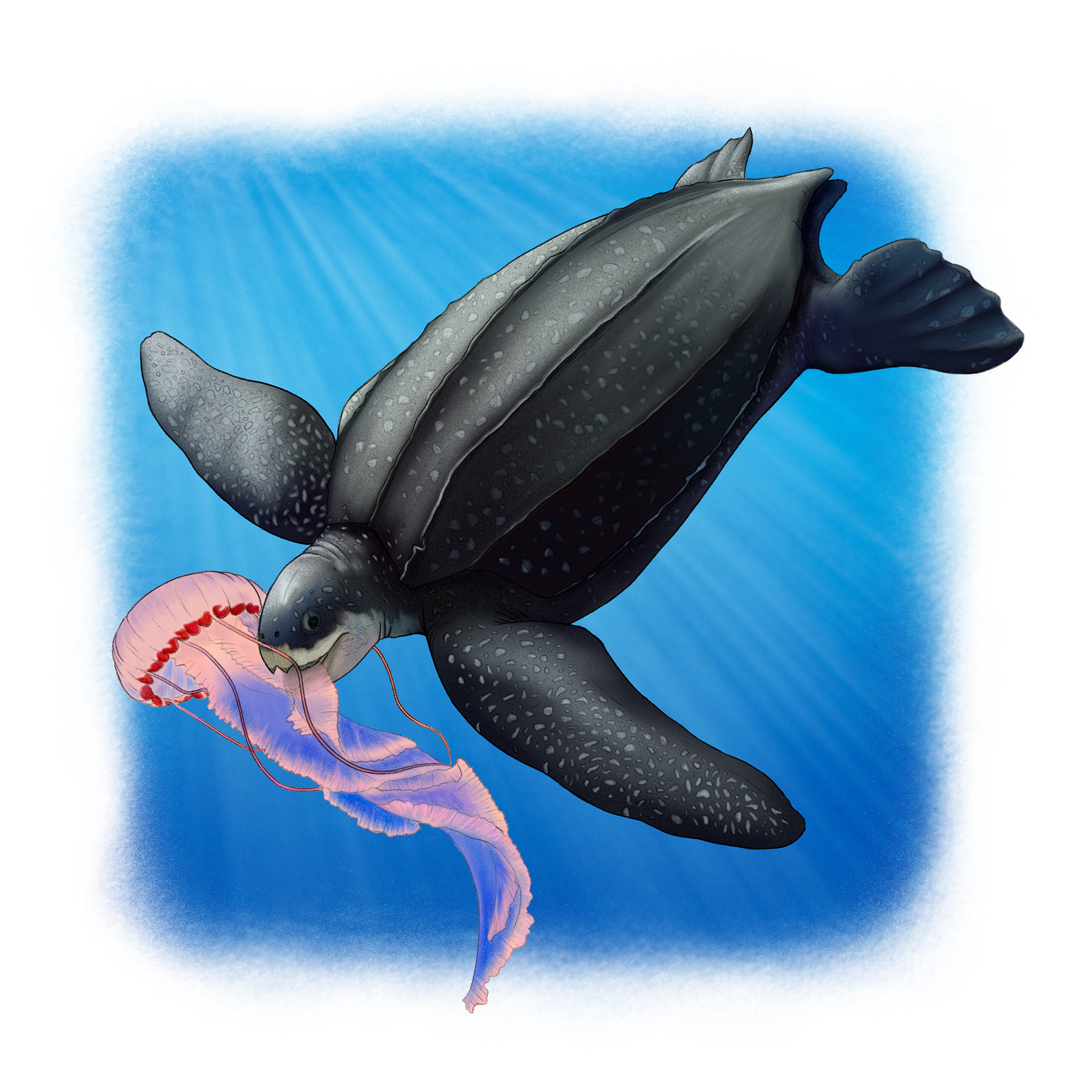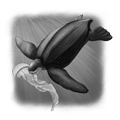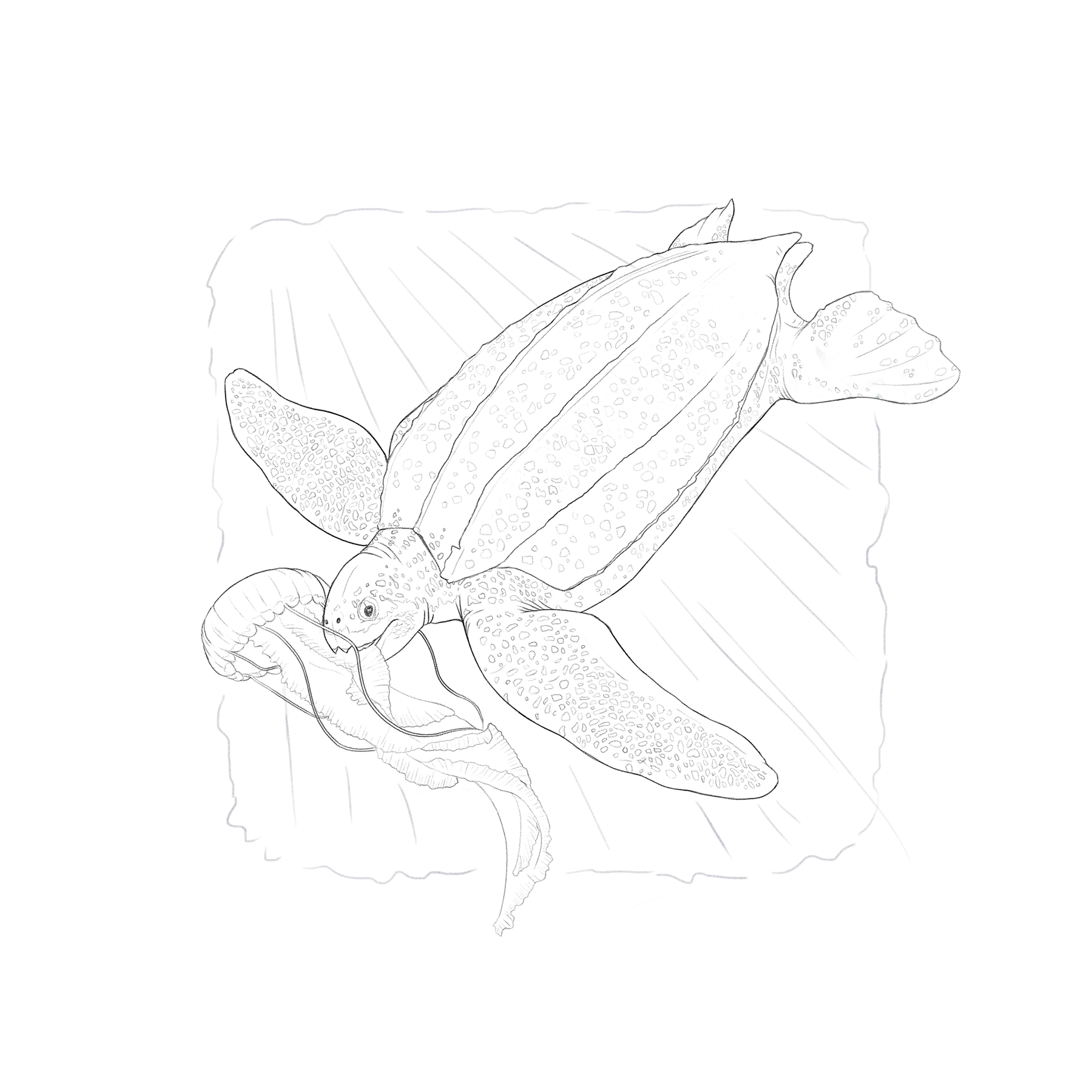
✎ Luis Mora

✎ Diego Aguilera


Leatherback Turtle
Dermochelys coriaceaCaribbean region
RECORRIDO VIRTUAL POR LA BIODIVERSIDAD DE COLOMBIA
Museo de Historia Natural
Universidad Nacional de Colombia

Leatherback Turtle
Dermochelys coriacea
Morpho-functionality
Shell
They call it a leather turtle because its shell is made of soft connective tissue.
Mouth
They have keratinized papillae in the mouth and esophagus that allow them to retain food.
Beak
The beak of its mouth makes it easier for it to feed mainly on jellyfish and seaweed.
Lifecycle
Reproduction is believed to occur in tropical waters during the nesting season, although it can also occur during migration. Females reproduce in cycles of two to four years, and these cycles appear to be influenced by climate and abundance of food in foraging areas. The nesting season in the Colombian Caribbean runs from February to early July and in the Gulf of Urabá, the nesting peak occurs in April and May. Clutches have an average size of 81 fertile and 34 infertile eggs per nest and are incubated for 60 days. Currently there is no consensus on the age of sexual maturity, it is estimated to be between 13 and 29 years old.
Leatherback Turtle
Distribution
It is distributed in almost all oceans, except for Antarctica. In Colombia it is found on the Caribbean coasts in the departments of Antioquia, Bolívar, Cauca, Chocó, La Guajira, Magdalena and Nariño. One of the largest populations of leatherback turtles has been recorded offshore to the southwest of the Galapagos Archipelago and in the province of Manabí.
Distribution area






